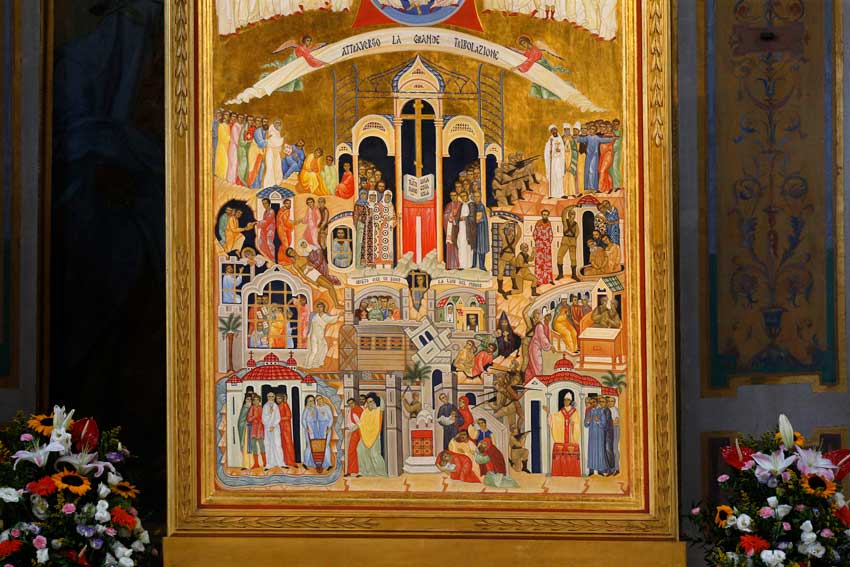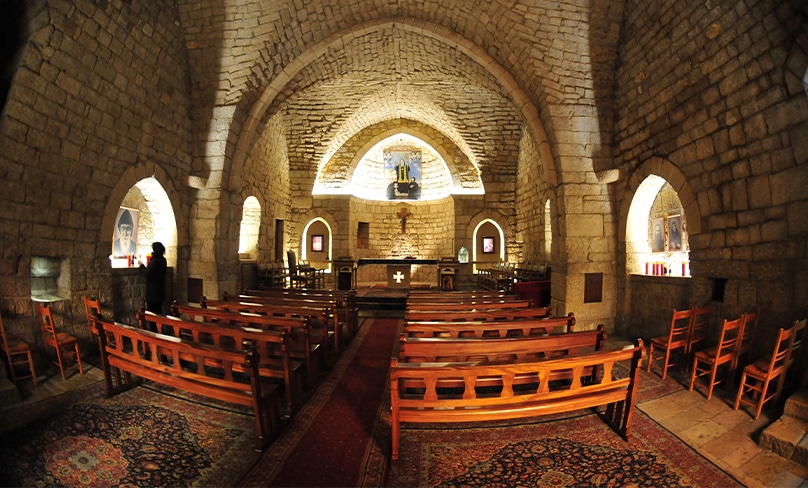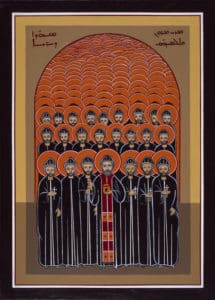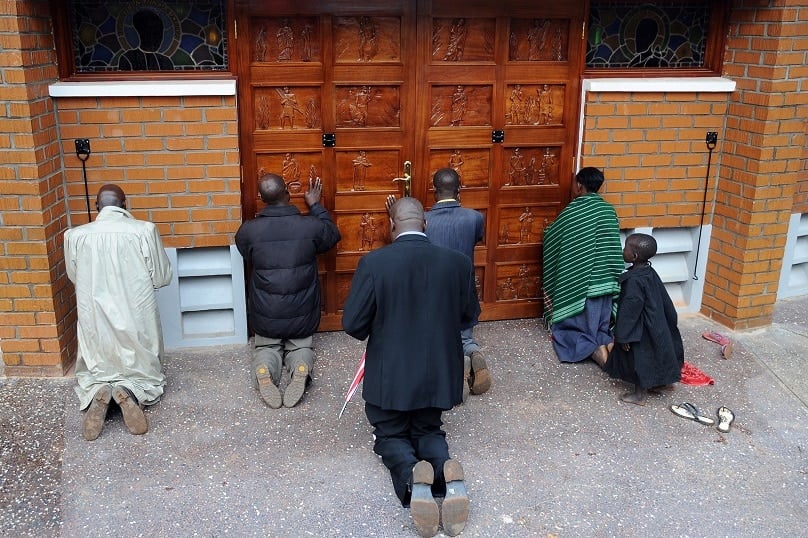
By Dominic Altakchy
The fact that the Catholic Church is still standing today is testament to its divine institution.
From its very beginnings and throughout the centuries, its unity and existence have been threatened by internally driven contention and externally fuelled hostility. Yet two millennia later and against all human odds, the Church continues to subsist as Christ’s mystical body on earth.
Of course, this will come as no surprise to believers, for it was Christ himself who promised that “the gates of hades will not prevail against it” (Mt 16:18).
“In the Maronite Church, on 31 July, we commemorate the feast of the 350 Monks of St Maroun who, in 517, were heartlessly massacred for upholding the Christology of the Fourth Ecumenical Council of Chalcedon.”
But it is also true that the Church would not be here today if it were not for the early martyrs who, by their courageous witness and defence of the faith, preserved the Apostolic Tradition in all its truth, beauty, and goodness for future believers. For as Tertullian put it, “the blood of the martyrs is seed for the Church.”
In the Maronite Church, on 31 July, we commemorate the feast of the 350 Monks of St Maroun who, in 517, were heartlessly massacred for upholding the Christology of the Fourth Ecumenical Council of Chalcedon.
Unlike the Monophysites who recognised only one human-divine nature in Christ, the Maronite monks of Beit Maroun and its confederate monasteries, affirmed the conciliar decrees of 451, that two perfect natures, divine and human, were united in Christ’s one divine person.

The Maronites had been ardent proponents of the Chalcedonian position both before and after the Council. In the years after the Council, they were subjected to persecution by high-ranking clerics of Antioch, not least Patriarch Severus, who had espoused the Monophysite heresy.
Hostility towards them was only exacerbated by the fact that the Maronite monks led a preaching campaign against the heresy.
In 517, as a group of Maronite monks was headed toward the Monastery of Saint Simon Stylite in Aleppo, they were ambushed and 350 of them were killed. Some monks managed to escape wounded.
“First, the Maronite martyrs remind us – and our clerics – that we are not masters over the Apostolic Tradition.”
The events of 517 were recounted in a detailed letter written to Pope Hormisdas by the superior of Beit Maroun Monastery, Alexander, and the superiors of the neighbouring monasteries.
In their correspondence, the monks described the afflictions suffered by the martyrs, as well as those who were being expelled from their monasteries and imprisoned at the hands of Emperor Anastasius’ army.
They subsequently received a letter of encouragement from the Pope in 518 who praised the faith of the martyrs, and who exhorted the surviving monks to persevere in the Catholic and Apostolic faith.

As bulwarks of fidelity to the dogmatic teachings of the Church, the 350 Martyrs have much to teach us about our own responsibility to give witness to our faith in the society of today.
First, the Maronite martyrs remind us – and our clerics – that we are not masters over the Apostolic Tradition. We are mere beneficiaries and guardians of the Revelation which Christ entrusted to the Apostles, and it is our duty to uphold it.
Contrary to what many individuals and groups in the Church think today, we do not have the authority to change the definitive teachings of the Church on matters of moral, theological, or ecclesiological.
Regardless of how inconvenient or uncomfortable these teachings may be, we like the martyrs must be willing to fervently live and defend the revealed truths of our faith despite all obstacles.
We must die to our own preferences and opinions and obediently assent to the one revealed truth that safeguards our ecclesiastical unity.
“The 350 Martyrs exemplify an unshakeable conviction with which we should respond to such challenges.”
The 350 Martyrs also show us how to persevere and remain faithful in the face of challenges, persecution, and confusion.
The time of the martyrs was laden with theological contention. It was also a time when the espousal of orthodox beliefs resulted in unrelenting persecution.

That context, although distinct, is nevertheless akin to the situation we find ourselves in today. Within and without the Church, a plethora of competing voices are making claims to the truth.
It is also becoming more and more difficult to disclose one’s Christian identity in an increasingly secular society.
“Following their example, we need to remain steadfast in the truth, in an age of hostility and relativism.”
The 350 Martyrs exemplify an unshakeable conviction with which we should respond to such challenges.
Like them, we need to endure suffering with faith, hope, and love, and keep intently focused on our heavenly goal (as the Entrance Hymn for the feast reminds us). We need to make sacrifices in union with and for the sake of our Lord. And following their example, we need to remain steadfast in the truth, in an age of hostility and relativism, so that even our small sacrifices and sufferings may contribute but a few mores seeds for the oneness and unity of our holy Mother Church.
Dominic Altakchy is a Maronite Catholic who currently serves as the Sacramental Coordinator at Ryde-Gladesville Catholic Parish, in the Archdiocese of Sydney.
